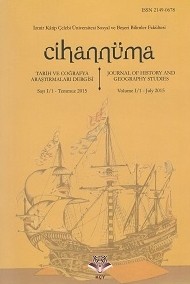1930’lu Yılların İlk Yarısında Zonguldak’ı Ziyaret Eden Gezi Muhabirlerinin İzlenimleri
Impressions of Travelling Correspondents on Zonguldak in the first half of the 1930s
Author(s): Yasin KayışSubject(s): Media studies, National Economy, Rural and urban sociology, Interwar Period (1920 - 1939)
Published by: İzmir Kâtip Çelebi Üniversitesi, Sosyal ve Beşeri Bilimler Fakültesi
Keywords: Zonguldak; Coal; Travel Articles; Press; Ragıp Kemal Cantürk;
Summary/Abstract: Although the minority-foreign hegemony since the 19th century, which dominated the Zonguldak coal basin, took a blow with the War of Independence, it still could not be broken in the first years of the republic. The young republic of Turkey both aimed to be active in the basin and tried to increase coal production. Improving the working conditions of the employees, eliminating the technical inadequacies, starting the railway line instruction and introducing the domestic capital into the coal industry by the state incentives were among the important steps taken during the 1920s. The basin was open to significant developments in the first half of the 1930s. With the effects of world economic crisis, Turkish Republic that turned toward statism policy was about to take the management of the coal mining in Zonguldak. In this process, Zonguldak was visited by high level government officials while preparations were made for the nationalization of the coal basin. The 1930s were also the years in which urbanization accelerated and social life transformed in Zonguldak. As a result of the employment opportunities, the population increased, public works and infrastructure services gained importance, the minority-foreign effect decreased; and the changes brought by the republic began to spread throughout the city. Zonguldak was the subject of national newspapers in the 1930s as the national economy and regional structures underwent significant transformations. Some journalists analyzed the city from the perspective of the official visits or the region’s economic value, and thus focused on coal which was the raison d'être of the city. Some journalists visited the city as a destination of their route, and contacted not only with the managers but also with the public. Those journalists who reviewed the social life, municipalism, urban life and public services beside the coal share important details with the readers.
Journal: Cihannüma: Tarih ve Coğrafya Araştırmaları Dergisi
- Issue Year: VI/2020
- Issue No: 1
- Page Range: 123-162
- Page Count: 40
- Language: Turkish

